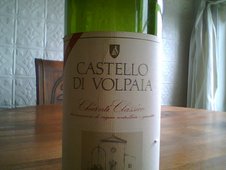The Palette of Moonshines Expands
By ROBERT SIMONSON
In the past two years, many an American distillery has hopped on the moonshine bandwagon, releasing its own unaged, just-off-the-still “white dogs.” But few are taking it as far as Heaven Hill, the large, family-owned, Kentucky outfit that produces a wide line of whiskeys. They are going to have five different versions of white lighting. Why? Because they can.
“We’re the only distillery who can realize a new make of every kind of American whiskey,” said Larry Kass, longtime spokesman of Heaven Hill. By that he means that the company produces five distinct mash recipes: a rye-heavy bourbon; a wheated bourbon, which substitutes wheat for the usual rye; a wheat whiskey; a rye whiskey; and a corn whiskey.
Two of the white whiskeys, which are being bottled as the Trybox Series of New Make Whiskeys, were released in April, and are just reaching stores, priced at around $25. They are the rye-accented bourbon distillate (which is still dominated by corn, which must, by law, make up 51 percent of a bourbon’s mash bill) that results in such familiar brands as Elijah Craig and Evan Williams; and the rye recipe that produces Rittenhouse Straight Rye.
“This whole phenomenon is the result of mixologists,” said Mr. Kass, “who are finding new and novel ways to use it and take advantage of its attributes. The other market is retail sales. But I don’t think it’s the type of product someone is going to buy and use cases and cases. You get connoisseurs buying it as an educational tool. In bringing out these different versions, it puts a few more arrows in the quiver of mixologists and connoisseurs.”
The other three Heaven Hill white dogs — the wheated bourbon (which ages into Old Fitzgerald), the wheat whiskey (Bernheim Original) and corn whiskey (Georgia Moon and Mellow Corn) — will be rolled out slowly, with the next arrived sometime this coming fall. All will be bottled at 62.5 percent alcohol, or “barrel proof.”
In the past two years, many an American distillery has hopped on the moonshine bandwagon, releasing its own unaged, just-off-the-still “white dogs.” But few are taking it as far as Heaven Hill, the large, family-owned, Kentucky outfit that produces a wide line of whiskeys. They are going to have five different versions of white lighting. Why? Because they can.
“We’re the only distillery who can realize a new make of every kind of American whiskey,” said Larry Kass, longtime spokesman of Heaven Hill. By that he means that the company produces five distinct mash recipes: a rye-heavy bourbon; a wheated bourbon, which substitutes wheat for the usual rye; a wheat whiskey; a rye whiskey; and a corn whiskey.
Two of the white whiskeys, which are being bottled as the Trybox Series of New Make Whiskeys, were released in April, and are just reaching stores, priced at around $25. They are the rye-accented bourbon distillate (which is still dominated by corn, which must, by law, make up 51 percent of a bourbon’s mash bill) that results in such familiar brands as Elijah Craig and Evan Williams; and the rye recipe that produces Rittenhouse Straight Rye.
“This whole phenomenon is the result of mixologists,” said Mr. Kass, “who are finding new and novel ways to use it and take advantage of its attributes. The other market is retail sales. But I don’t think it’s the type of product someone is going to buy and use cases and cases. You get connoisseurs buying it as an educational tool. In bringing out these different versions, it puts a few more arrows in the quiver of mixologists and connoisseurs.”
The other three Heaven Hill white dogs — the wheated bourbon (which ages into Old Fitzgerald), the wheat whiskey (Bernheim Original) and corn whiskey (Georgia Moon and Mellow Corn) — will be rolled out slowly, with the next arrived sometime this coming fall. All will be bottled at 62.5 percent alcohol, or “barrel proof.”




